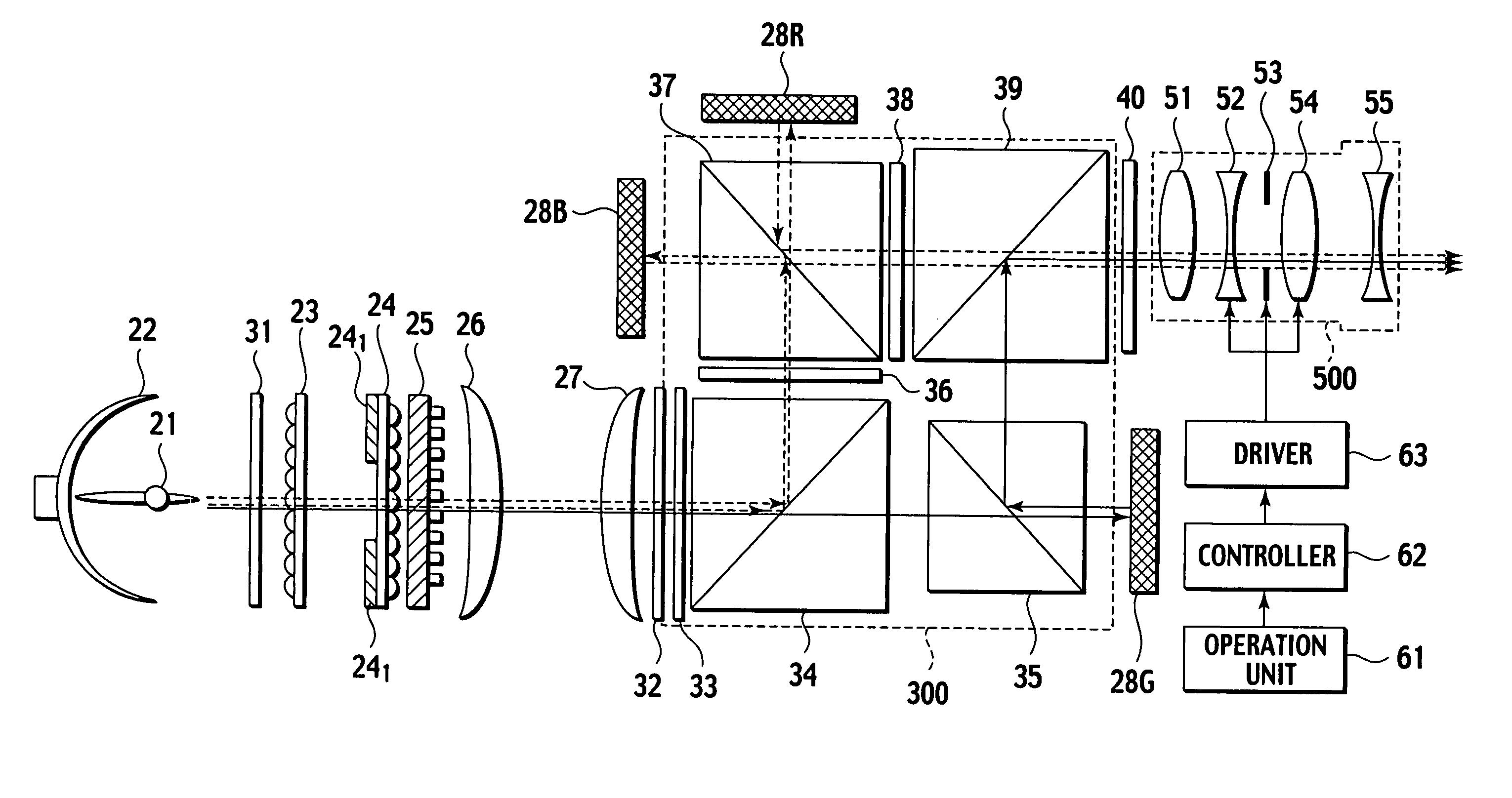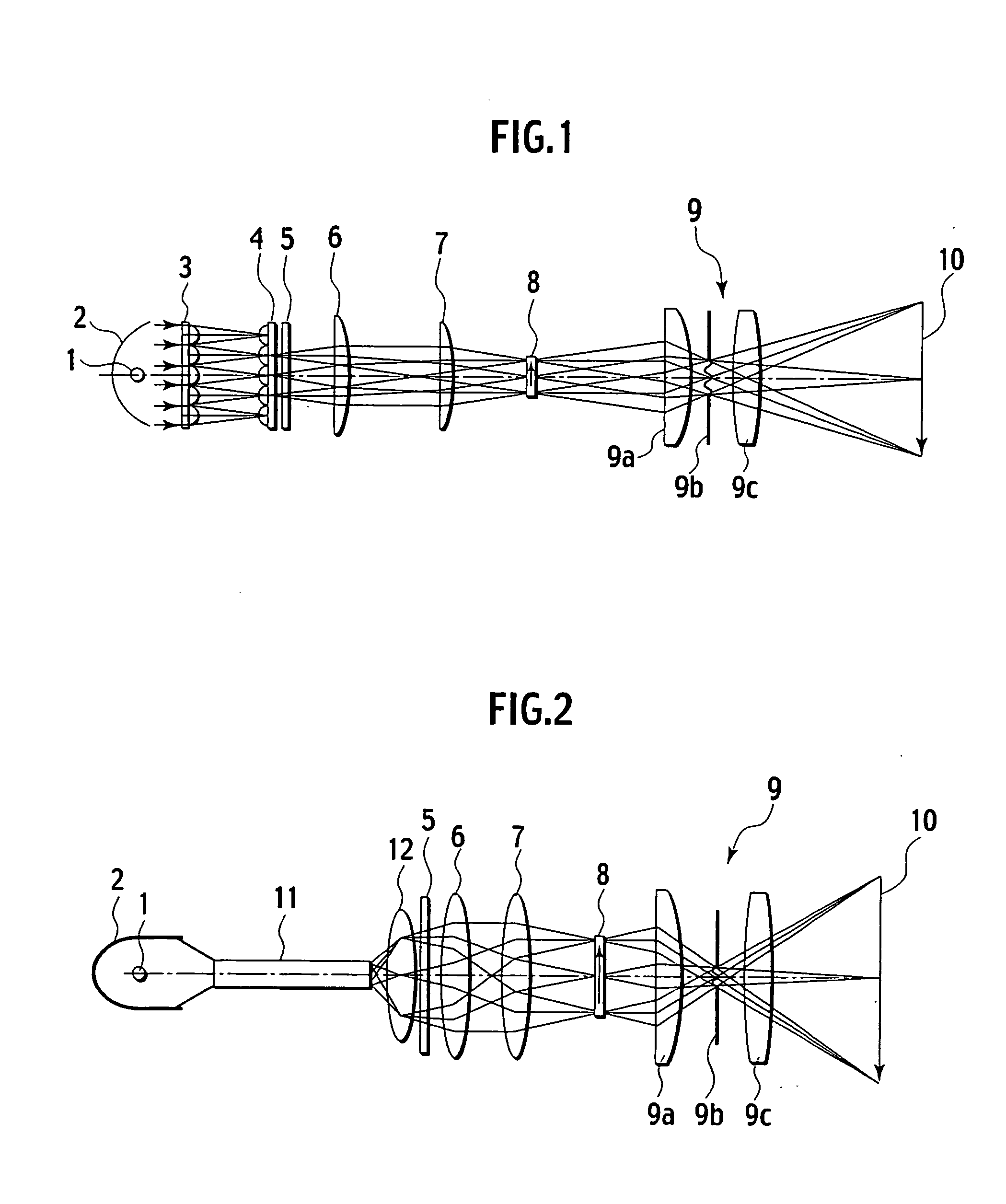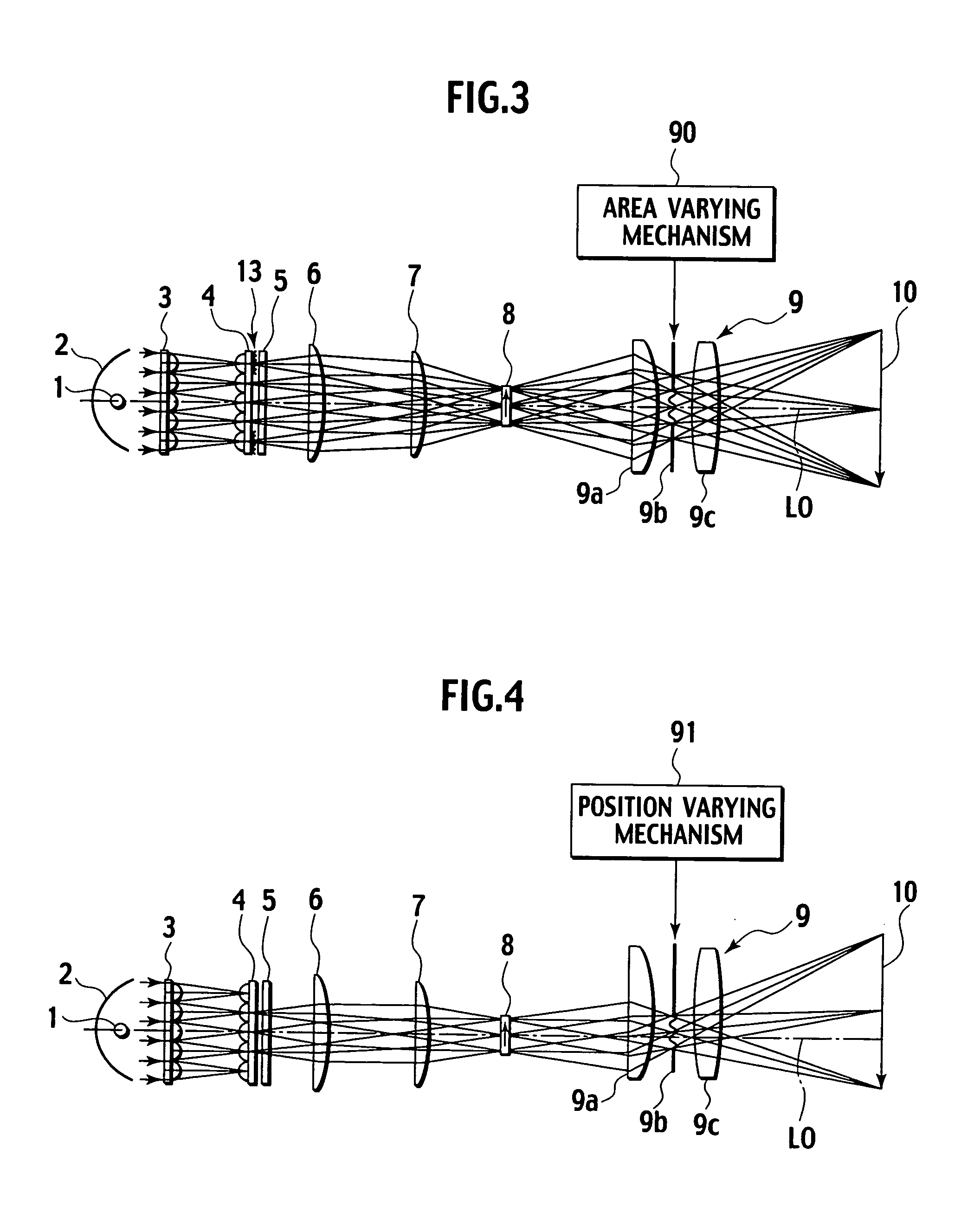Image display apparatus
a technology of image display and display screen, which is applied in the direction of optical elements, instruments, printing, etc., can solve the problems of inacceptability, and deteriorating image quality, and achieve the effect of high contrast without deteriorating light use efficiency
- Summary
- Abstract
- Description
- Claims
- Application Information
AI Technical Summary
Benefits of technology
Problems solved by technology
Method used
Image
Examples
first embodiment
[0073]FIG. 3 is a plan view showing an image display apparatus according to a first embodiment of the present invention. In FIG. 3, the same parts as those of FIG. 1 are represented with like reference numerals and their explanations will not be repeated. A projection lens 9 shown in FIG. 3 is of a focal-length-variable type.
[0074] For the sake of simplicity, the image display apparatus of FIG. 3 is depicted as a monochromatic image display apparatus. In practice, the apparatus will be materialized as a color image display apparatus. Illumination light from a light source 1 is transmitted through first and second lens arrays 3 and 4. Part of the transmitted light distal from an optical axis L0 is passed through a color balance adjusting filter 13. The filter 13 blocks a predetermined wavelength range of the light to drop the level thereof and passes the remaining wavelength range of the light, to thereby adjust a color balance of images to be displayed. In this example, the filter ...
second embodiment
[0081]FIG. 4 is a plan view showing an image display apparatus according to a second embodiment of the present invention. In FIG. 4, the same parts as those of FIG. 1 are represented with like reference numerals and their explanations will not be repeated. A projection lens 9 shown in FIG. 4 is of a focal-length-variable type.
[0082] The image display apparatus according to the second embodiment has a flapping function. Namely, the optical axis (center axis) of the projection lens 9 is offset in parallel from the optical axis L0 of an illuminating optical system, or is inclined relative to the optical axis L0. The flapping function is useful to correctly display an image on a screen 10 when the image display apparatus is offset from a front position of the screen 10, or when the image display apparatus is inclined relative to a normal of the screen 10.
[0083] In FIG. 4, the optical axis of the projection lens 9 is offset in parallel from the optical axis L0 of the illuminating optic...
third embodiment
[0087]FIGS. 5 and 6 are plan views showing an image display apparatus according to a third embodiment of the present invention, in which FIG. 5 shows a focal-length-variable projection lens 9 being at a short focus end (wide end) and FIG. 6 shows the same at a long focus end (tele end).
[0088] According to the third embodiment, the projection lens 9 of the image display apparatus is a focal-length-variable lens (zoom lens). Varying a focal length is achieved by changing the distance between an entrance lens 9a and an exit lens 9c of the projection lens 9. The projection lens 9 consisting of the entrance lens 9a and exit lens 9c has a resultant focal length that is variable according to the distance between the entrance lens 9a and the exit lens 9c.
[0089] When the distance between the entrance lens 9a and the exit lens 9c is changed to change a resultant focal length, a pupil position also changes in the direction of an optical axis L0. To prevent the pupil position from moving in r...
PUM
 Login to View More
Login to View More Abstract
Description
Claims
Application Information
 Login to View More
Login to View More - R&D
- Intellectual Property
- Life Sciences
- Materials
- Tech Scout
- Unparalleled Data Quality
- Higher Quality Content
- 60% Fewer Hallucinations
Browse by: Latest US Patents, China's latest patents, Technical Efficacy Thesaurus, Application Domain, Technology Topic, Popular Technical Reports.
© 2025 PatSnap. All rights reserved.Legal|Privacy policy|Modern Slavery Act Transparency Statement|Sitemap|About US| Contact US: help@patsnap.com



